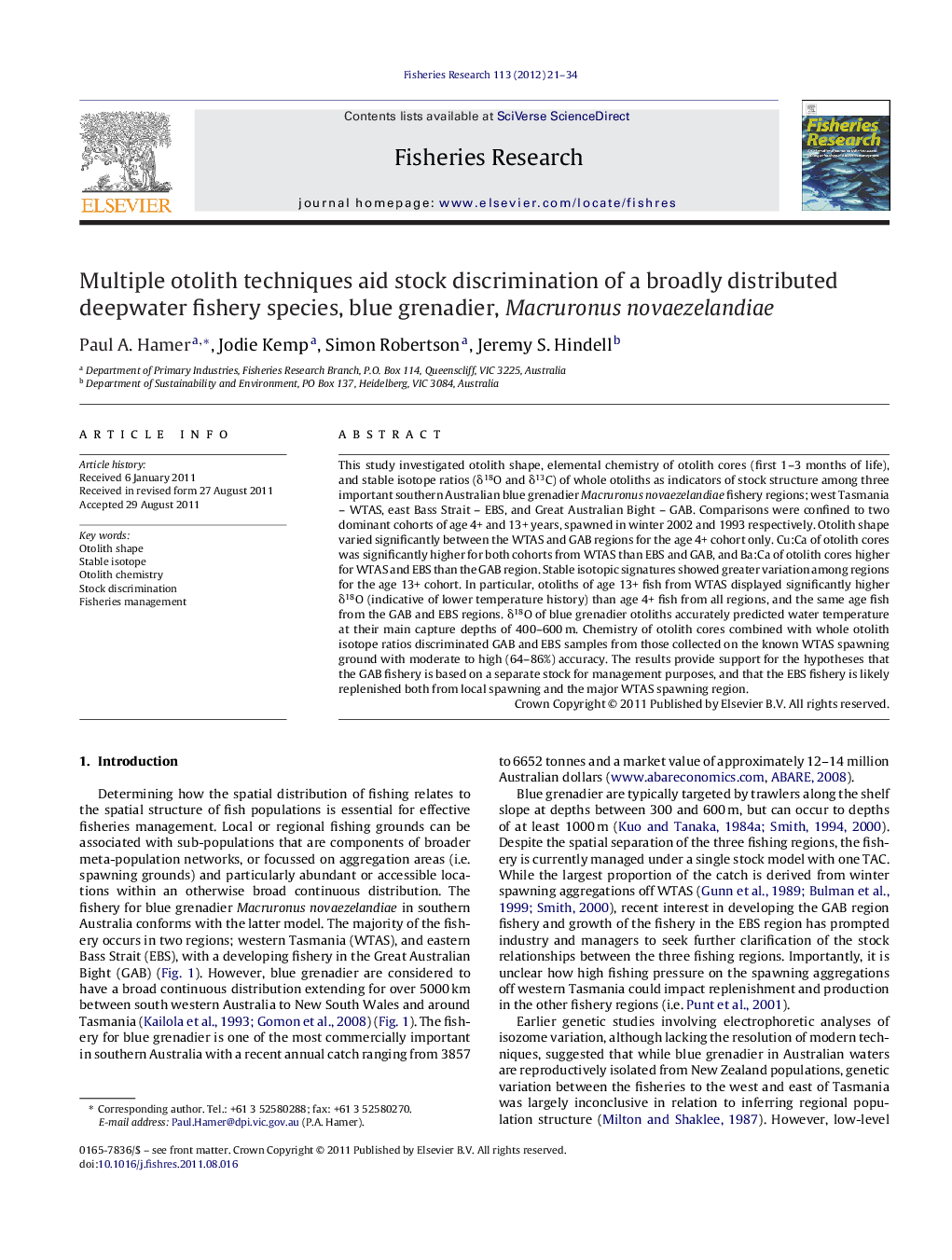| Article ID | Journal | Published Year | Pages | File Type |
|---|---|---|---|---|
| 4543508 | Fisheries Research | 2012 | 14 Pages |
This study investigated otolith shape, elemental chemistry of otolith cores (first 1–3 months of life), and stable isotope ratios (δ18O and δ13C) of whole otoliths as indicators of stock structure among three important southern Australian blue grenadier Macruronus novaezelandiae fishery regions; west Tasmania – WTAS, east Bass Strait – EBS, and Great Australian Bight – GAB. Comparisons were confined to two dominant cohorts of age 4+ and 13+ years, spawned in winter 2002 and 1993 respectively. Otolith shape varied significantly between the WTAS and GAB regions for the age 4+ cohort only. Cu:Ca of otolith cores was significantly higher for both cohorts from WTAS than EBS and GAB, and Ba:Ca of otolith cores higher for WTAS and EBS than the GAB region. Stable isotopic signatures showed greater variation among regions for the age 13+ cohort. In particular, otoliths of age 13+ fish from WTAS displayed significantly higher δ18O (indicative of lower temperature history) than age 4+ fish from all regions, and the same age fish from the GAB and EBS regions. δ18O of blue grenadier otoliths accurately predicted water temperature at their main capture depths of 400–600 m. Chemistry of otolith cores combined with whole otolith isotope ratios discriminated GAB and EBS samples from those collected on the known WTAS spawning ground with moderate to high (64–86%) accuracy. The results provide support for the hypotheses that the GAB fishery is based on a separate stock for management purposes, and that the EBS fishery is likely replenished both from local spawning and the major WTAS spawning region.
► Multiple otolith methods are applied to resolve stock structure of blue grenadier. ► Variation among fishery regions detected for shape, trace elements and δ18O, δ13C. ► δ18O otolith shown to predict actual water temperatures at capture depths. ► Results highlight value of applying multiple techniques to stock structure analyses. ► New information provided to improve spatial management of this important resource.
